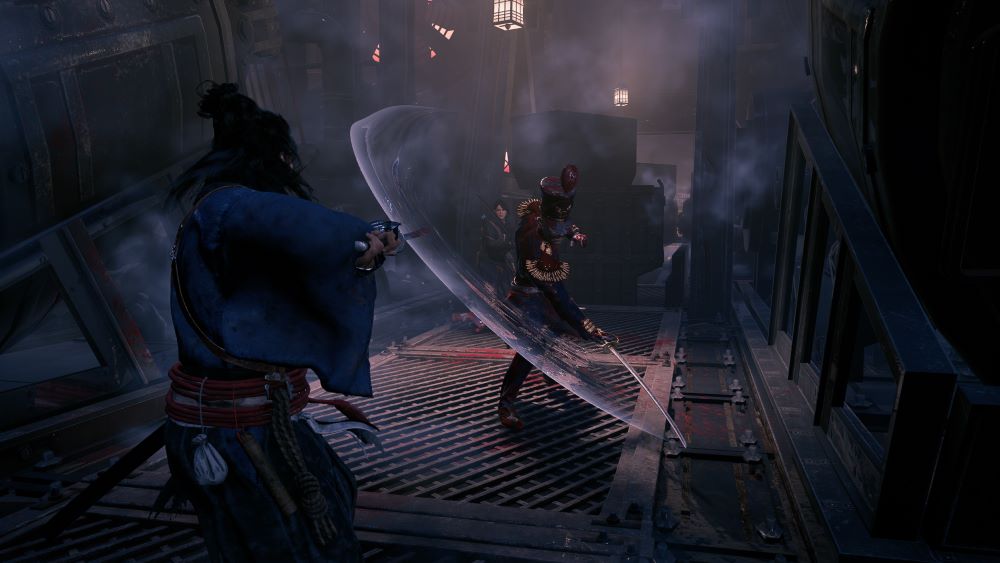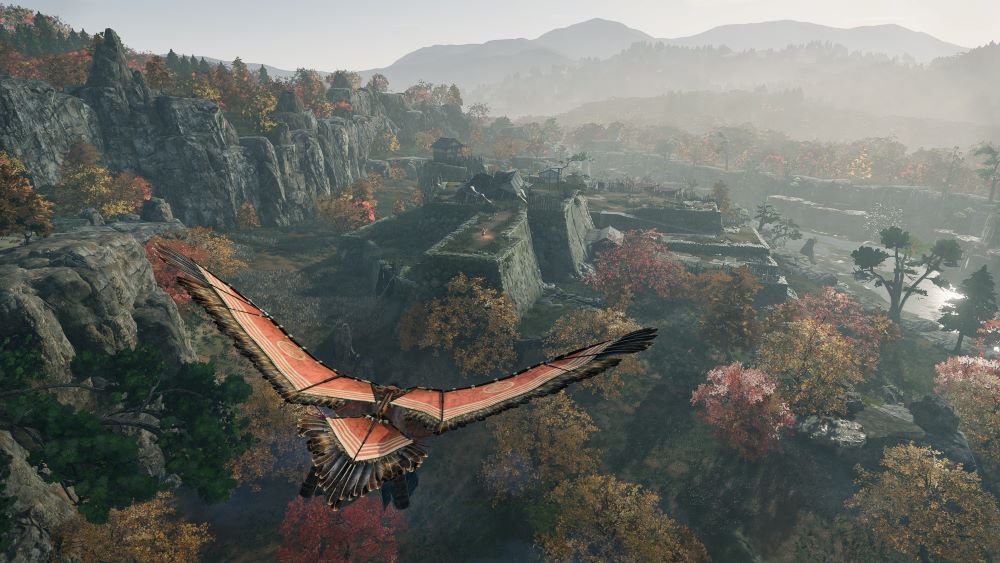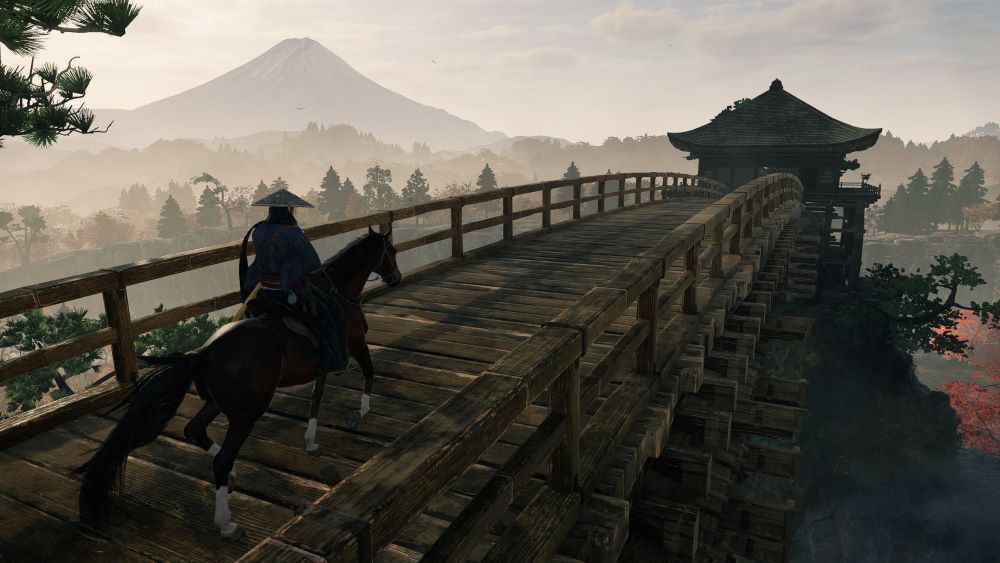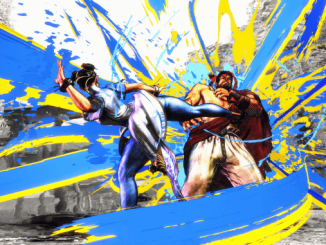Our review of Rise of the Rōnin, developed by Team Ninja. Available now for PS5.

WHAT IS IT?
Ghost of Tsushima meets Ninja Gaiden meets Shōgun.
IS IT GOOD?
It’s a decent romp but lacks some of the finer detail to really stand out.
WHO SHOULD PLAY IT?
Jin Sakai cosplayers.

SHOGUNATE
The year’s hottest new miniseries, FX’s admirably faithful remake of James Clavell’s Shōgun, depicts a semi-fictionalized account of the dawn of the Tokugawa/Edo shogunate, which saw one military dynasty rule Japan for nearly three hundred years, from 1603 to 1868. As in Clavell’s original 1975 novel, and the (excellent) 1980 miniseries adaptation, the 2024 Shōgun changes some names (the historical Tokugawa Ieyasu becomes “Toshi Toranaga”, his British lieutenant William Adams becomes “John Blackthorne”) but in broad strokes covers the key moments preceding Tokugawa’s consolidation of power, leading into a period of extreme isolationism that – William Adams aside – saw Japan/Edo close itself off to outsiders.
By coincidence or not, Team Ninja’s Rise of the Rōnin, which launches this month, is set in the final years of the very same Edo Shogunate, as marauding foreign forces – including the (in)famous Commodore Matthew Perry of the U.S. Navy – threaten Japan’s increasingly tenuous isolationist policies, which by 1868 would officially be abandoned.
Like Shōgun, Rise of the Rōnin takes liberties with history for the sake of adventure and high drama, in this case casting players as a pair of rōnin (lone samurai) trained in the ways of the fictional Veiled Edge, a secret organization combining aspects of samurai and ninja. Offering both a single-player story as well as a three-player cooperative mode, Rōnin has some of the intrigue of Shōgun and some of the beauty of standard-bearer Ghost of Tsushima, but ultimately cannot reach the heights of either. That said, for fans of Team Ninja’s particularly brutal brand of hardcore action gaming, there is much to love about Rōnin, including, sacrilegious as it may be, a wholly welcome “easy” mode.

GHOSTS
Once you get past Rōnin‘s distractingly robust character creator – you’re responsible for creating both halves of your “Veiled Edge” pairing – the game eases you into things with a tutorial mission requiring you to sneak aboard Commodore Perry’s (ludicrously poorly patrolled) “black ship.” A few sword duels and some gunplay later, and the real adventure begins: a sprawling, open-world 19th century samurai/ninja epic with light magic elements and a lot of flashing swords.
But that opening tutorial actually tells you everything you need to know about this game, including whether it’s right for you. The combat is demanding, but fair, forcing you to learn the razor-thin parry timing in order to have any hope of surviving. The storytelling is slipshod, with unclear motivations and a failure to explain what is going on or why you should care. The graphics are middling – while there’s some nice detailing above deck with the waves splashing about, the interiors are drab and lacking in detail. Even the character animations are clumsy.
And that’s Rise of the Rōnin in a nutshell. If, like me, you came into this game expecting a Tsushima/Shōgun-like sprawling historical epic, with lush landscapes and beautiful environments, you’re bound to come away disappointed. If, however, you saw Team Ninja on the label and immediately flashed back to fond memories of Ninja Gaiden or Nioh, this game is probably for you. The ability to modify difficulty on the fly does make a huge difference, however, reducing a lot of the barriers to access normally associated with Team Ninja games. As someone who has triumphed over both Sekiro and Ghosts ‘n Goblins, I am not ashamed to admit that I occasionally relied on Easy Mode to sneak past some of Rōnin‘s toughest segments.

SOULS
Rise of the Rōnin is a third-person open-world adventure game in which players control an unnamed rōnin set loose on a robustly developed – if graphically lackluster – approximation of 19th century Japan, centered around the major centres of Yokohama, Kyoto and Edo (modern-day Tokyo). Combining swordplay with ranged attacks and the always-useful grappling hook/hang glider combo, Rōnin resembles a lot of other recent action fare, including the various Soulslikes, not only in terms of difficulty, but in the way players can rest at waypoint banners and reset the enemies they’ve previously defeated.
It’s disappointing then that Rōnin, despite releasing four years after Ghost of Tsushima and one whole console generation later, doesn’t come close to matching the graphics of that game. While the aesthetic is there, and there are undoubtedly some lovely environments – particularly the snowy, mountainous landscapes – Team Ninja simply has not taken advantage of the graphical powerhouse that is the PlayStation 5. Character models are underdeveloped, the grass, trees, and animals all look plasticky and fake, and there’s a general fuzziness around the edges, suggesting more time was spent on combat mechanics than on producing a visual marvel. For a game that so consciously seeks to emulate Tsushima – and other stunning games like the various FromSoftware Soulslikes – it’s a real disappointment.
There are also some choices that leave something to be desired. Why not have a dual-language audio option – much like TV’s Shōgun – where characters speak their own languages, instead of being forced to choose between either all-Japanese or all-English dialogue? Why, in a game ostensibly about diplomacy and the geopolitical machinations of states, do so many of the missions boil down to “go here, kill that guy”? Why, for an open-world structure, do so many of the mission types keep repeating themselves so unapologetically?
That said, when you’re actually in the heat of battle, a lot of those concerns fall to the wayside. Combat ebbs and flows in enjoyable ways, and the various mini-bosses and main bosses offer suitable challenges which reward the diligent player. Rōnin‘s emphasis on parrying and counters is not surprising, given its pedigree, although players may find it daunting to discover how much this is, in effect, a parrying game through and through. If you’re the type of player that can’t master timing (or if you sucked at Guitar Hero), you may want to look elsewhere.
It’s also disappointing that Rōnin so closely resembles that other open-world beast of the 21st century – you know what I’m talking about, it starts with “U” and ends with “bisoft” – in its ludicrously overcrowded map of side quests, minigames, random activities, and other stuff to clutter up the screen. Tsushima barely had any graphical overlay at all – even the waypoint system was handled by subtle gusts of wind – making Rōnin‘s visual clutter stand out all the more.
So yes, there’s fun to be had and cool environments to explore in Rōnin, and those looking to scratch a very particular hardcore gaming itch will find a home here. But four years after Ghost of Tsushima – and three years after its stellar “Director’s Cut” reissue on PS5 – it’s hard not to wonder why Rōnin wasn’t a little cleaner, better written, and more diverse than the run-stab-parry product we ultimately got here.
***
Final score: 7/10 fox shrines.
Visit the official website for Rise of the Rōnin here.



